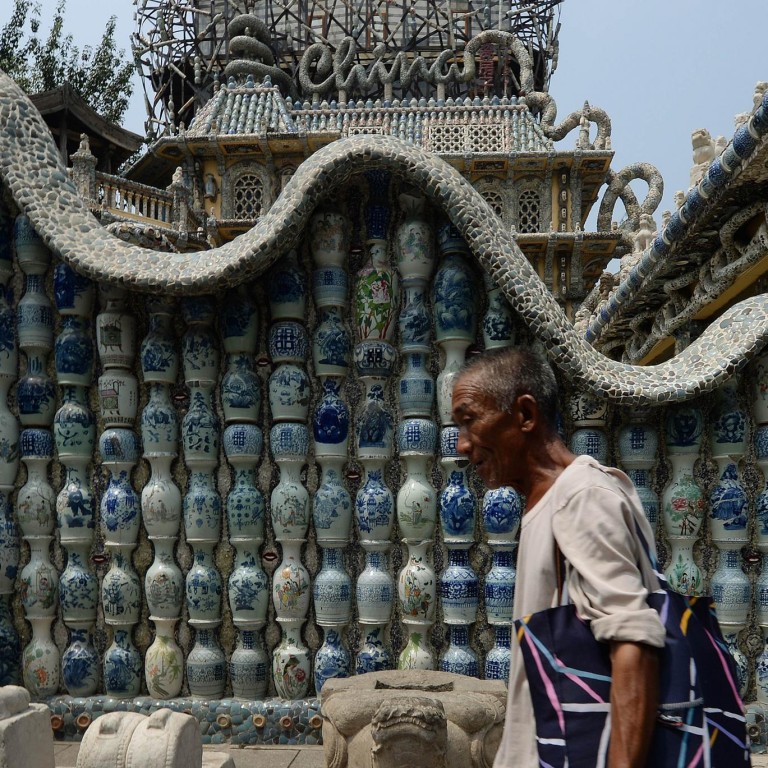
Book review: The Porcelain Thief by Huan Hsu
One night in 1938 during the second Sino-Japanese war, Liu Fengshu and his family dig a deep hole, line it with bamboo shelves and stash the family heirlooms there. Liu has an impressive collection of scrolls, antique furniture, jade and one of China's most famous, fragile treasures: porcelain. A few nights later the city falls to the Japanese, and they flee their Xingang home.
by Huan Hsu
Crown Publishers

One night in 1938 during the second Sino-Japanese war, Liu Fengshu and his family dig a deep hole, line it with bamboo shelves and stash the family heirlooms there. Liu has an impressive collection of scrolls, antique furniture, jade and one of China's most famous, fragile treasures: porcelain. A few nights later the city falls to the Japanese, and they flee their Xingang home.
Growing up in Salt Lake City, Liu's great-great-grandson, Huan Hsu, has little interest in his family's history. As a teenager he rebels against his roots and wants to be American. He tries harder at sports than at mathematics and doesn't apply to Harvard.

However, Hsu has always liked to dig: literally, when he was a child, and figuratively as an investigative journalist later in life. One day, a small dish in Seattle Art Museum catches his eye and his curiosity is piqued. Seventy years after they were buried, he decides to search for his family's treasures.
His mission takes us across China, starting in Shanghai where he goes to work at his uncle's factory, learns Chinese and interviews his 96-year-old grandmother about his family's past. She isn't the wise old sage he expects and seems more interested in interrogating him about his dating than revealing much of use.
The story jumps back and forth between the present and past, based on fragments of stories salvaged from his grandmother and others. But Hsu is at his most entertaining when sharing his perceptions of modern China. With a wry sense of humour, he provides a glimpse of life in Shanghai's expat enclaves, its sprawling international schools, Western psychologists catering to adjustment disorders, and overpriced import supermarkets.
Frustrated by the fetishisation of Westerners, or , in China, he notes that ABCs don't get "foreigners" discounts at happy hours, nor will they ever get a job teaching English: "ABCs got the Chinese treatment at foreigner prices," he writes.
At first he recoils from the chaos, the cheating, the cutting corners and general absence of the Western concept of civility, and at one stage literally comes to blows with a local. He investigates Chinese culture with a journalist's zeal, digging for answers to things that mystify many visitors to China, such as why people grow long fingernails, wear their pyjamas in public and don't queue.
As he begins to grasp the language, however, his perception changes. "Everything operated according to unspoken and unwritten rules," he observes. "And it was no wonder why so many Westerners became seduced by China, because the foundation for all this chaos was exactly what they had been told their whole lives that China lacked: freedom."
Throughout history, porcelain has been one of China's most valuable cultural symbols. Today its nouveau riche compete with foreign collectors to snap it up at auctions. Hsu's family's tale is analogous to a far larger-scale art preservation effort, when Chiang Kai-shek ordered more than one million pieces of priceless porcelain and other national treasures to be shipped from the Palace Museum to Nanjing for safekeeping, others to Washington, DC.
Hsu is no sinologist - he's the first to admit his attempt to unravel his country's history is a naive, incomplete and, at times, perhaps inaccurate one. But his is an emotive attempt to gather and make sense of his family's - and China's - past. Finding the porcelain becomes less important than the journey itself - and the learning process it entails.
"Preserving history doesn't mean saving historical things," he observes. "What keeps art, and history, alive is the continuation of making, seeking, and transferring information."

